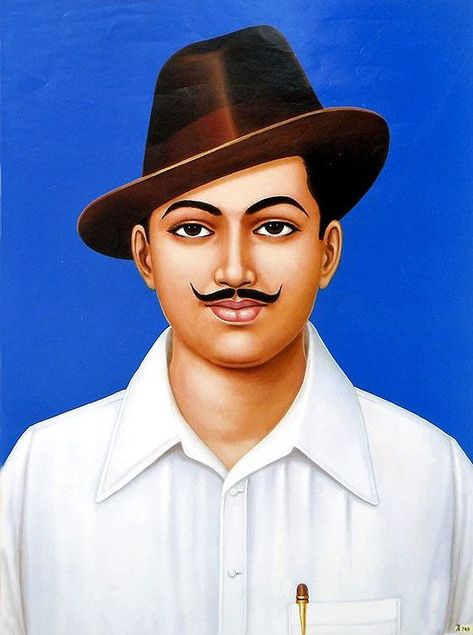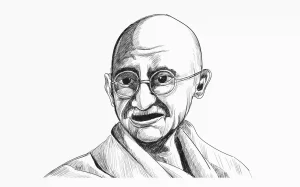Essay on Shaheed Bhagat Singh for Students and Kids

Shaheed Bhagat Singh was an Indian revolutionary who was hanged by British authorities in 1931. This essay will describe his early life, achievements, and contribution to the Indian freedom fight.
Bhagat Singh’s early life:
On October 27, 1907, Shaheed Bhagat Singh was born in the Punjab province of British India. He was the youngest son of Kishan Kaur and Ajit Singh. At the age of six, Singh was sent to England to study at a boarding school. In England, he became involved in the Indian independence movement and joined the Indian National Congress. In 1915, he helped organize an armed uprising against British rule in India. The uprising failed, and Singh was arrested and imprisoned in Britain. In 1917, he was sentenced to death for his involvement in the uprising. He was hanged in Lahore on March 23, 1931.
On March 23, 1931, Shaheed Bhagat Singh was hanged in Lahore for his involvement in the 1930 Indian independence movement. His martyrdom helped spur India’s struggle for independence from British rule. Today, Bhagat Singh is widely considered one of the country’s most important political leaders.
Bhagat Singh’s family:
Bhagat Singh’s family is quite large. His father, mother, and five brothers and sisters live in present-day India. Bhagat Singh was born in 1907 in the village of Churaman in the district of Sheikhupura, Punjab. His father, Kishan Singh, was a landowner and magistrate. Bhagat Singh’s mother, Sundar Kaur, was a schoolteacher.
Bhagat Singh’s Education:
Bhagat Singh was born on October 27, 1907, in the village of Banga, Punjab. He earned his early education at a local school before moving to Lahore to attend the Hindu College. In 1923, he transferred to the Khalsa College in Amritsar, where he studied political science and philosophy.
In 1929, Singh left India to study at the University of Zurich in Switzerland. There he met Mahatma Gandhi and became involved with the Indian freedom movement. After two years, he returned to India and began working for the Indian National Congress.
In 1934, Singh was arrested for participating in a peaceful protest against British rule in India, and he was convicted and sentenced to death by hanging. However, he was later released and fled to Nepal before being captured and executed in 1931. Bhagat Singh is considered one of the most influential figures in Indian history and is often cited as an inspiration for the modern-day liberation movements around the world.
Bhagat Singh’s Participation in the Freedom Fight:

Bhagat Singh was born into a Sikh family on December 26, 1907 in the village of Bagha Sahib, Gurdaspur, Punjab. Singh’s father, Ajit Singh, was a decorated soldier and a member of the Khalsa Brotherhood who also preached religious equality. When Singh was just five years old, his family moved to Lahore, where he would later attend the Government College.
In 1922, at the age of 19, Singh joined the Indian National Congress and soon became involved in its militant wing, the Ghadar Party. He was arrested in April 1927 and sentenced to life imprisonment for his involvement in the Ghadar Party’s activities.
Singh was released from prison in 1931 after serving nine years of his sentence and went into hiding. He returned to India two years later and resumed his political activities. On February 23, 1934, Singh and fellow activist Sukhdev Thind were arrested at Thind’s home and charged with conspiracy to commit murder. The charges were based on an accusation that the two men had plotted to kill British Political Agent J.M. Dutton by blowing up his car.
Bhagat Singh’s Contribution and Achievement at a Glance
Bhagat Singh, a freedom fighter and martyr, was one of the most influential people in Indian history. He was born on October 14, 1907, in a village in the Punjab province of India. He was arrested for protesting against British colonial rule in the early 1930s and hanged in 1931. His contributions to the Indian independence movement are indisputable.
Here is a quick look at what he did:
– Joined the Indian National Congress in 1922 and became involved in its revolutionary wing;
– Was imprisoned for 18 months (1928-1929) for his role in the Kori murder case;
– Arrested again in March 1930 and sentenced to death for leading an armed revolt called the Lahore conspiracy;
– Hanged on February 17, 1931.
The Turning Point for Bhagat Singh:
Bhagat Singh was a symbol of courage and sacrifice for the Indian independence movement. He was hanged to death on March 23, 1931, for his involvement in the revolutionary activities of the time. Bhagat Singh’s martyrdom inspired many others to take up arms against British colonialism, leading to India’s independence in 1947. His death marked a turning point in the struggle for Indian independence.
In this essay, we will explore how Bhagat Singh’s martyrdom helped to galvanize the nationalist movement and pave the way for India’s independence. We will also discuss his thoughts on revolution and freedom and how his example continues to inspire people today.
On December 27, 1907, Bhagat Singh was born in Amritsar, Punjab province, India. He became involved in the Indian independence movement at a young age and quickly developed a reputation as one of its most daring and outspoken leaders. In 1928, he was jailed for raising funds for an opposing political party. While in prison, he began writing poems and essays that harshly criticized British colonialism in India. After serving his sentence, he escaped from prison and fled to South Africa, where he continued to work for Indian independence.
Interesting facts about Bhagat Singh
1. Shaheed Bhagat Singh was born on October 17, 1907 in the village of Rajgir in the Punjab province of British India.
2. He was an Indian revolutionary who was hanged for his role in bombing the Central Legislative Assembly of British India on April 15, 1931.
3. Bhagat Singh was also a poet and wrote several poems that are still popular today.
4. After his death, Bhagat Singh’s martyrdom helped to inspire many young people to fight for India’s independence from British rule.
A Lesson from the Bhagat Singh’s Life
Despite being marginalized and persecuted during his lifetime, Shaheed Bhagat Singh continues to be an inspiration to people around the world. His martyrdom has led to increased awareness of the injustices faced by people throughout the world, and his life serves as a reminder that change is possible—if we are willing to fight for it.
Conclusion
Shaheed Bhagat Singh was one of the most influential revolutionaries of India. He is best known for leading the “Quit India” movement and is considered a martyr by many Indians. In this essay, I explored why Shaheed Bhagat Singh is such an iconic figure in Indian history. I hope that you have enjoyed reading and that you will continue to learn more about this incredible man in the future.
Hey kids, how much did you like Essay on Shaheed Bhagat Singh for Students and Kids? Please share your view in the comment box. Also, please share this story with your friends on social media so they can also enjoy it, and for more such stories, please bookmark storiespub.com.
Suggested Article –
- An Essay on Diwali | Deepawali the Festival of Lights
- 1000 word essay on Mahatma Gandhi in English
- Essay on Environment for the Students in English
- Air Pollution Essay for the Students
- Essay on Child Labor for Students and Children
- Essay on My School for Students
- Essay on Newspaper
- Tree Essay for Students and Children



